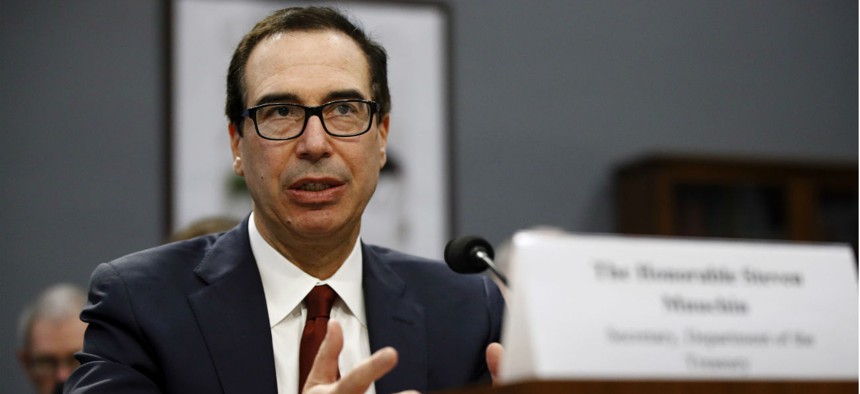Treasury Asks Congress to Act This Month on Debt Ceiling
Lawmakers had hoped to keep borrowing limit tied to negotiations on budget caps.
The Trump administration is warning Congress it has less time than expected to raise the nation’s borrowing limit and asked lawmakers to act in the coming weeks.
The Treasury Department is unsure of when it will reach its limit, Secretary Steve Mnuchin said in a letter to House Speaker Nancy Pelosi, D-Calif., on Friday. Therefore, Mnuchin explained, lawmakers should act to suspend or raise the borrowing cap before Congress adjourns for its annual summer recess.
“Based on updated projections, there is a scenario in which we run out of cash in early September, before Congress reconvenes,” Mnuchin said. “As such, I request that Congress increase the debt ceiling before Congress leaves for summer recess.”
Such a move could untangle the debt ceiling issue from ongoing negotiations over the budget and appropriations. Lawmakers had hoped to tie the two issues together, but the updated timeline could now make that difficult. Congress and the White House remain far apart on a deal to raise budget caps to avoid automatic spending cuts that are set to take place in fiscal 2020 under the 2011 Budget Control Act. Pelosi said on Thursday she has spoken to Mnuchin multiple times this week and is still looking to take up the debt ceiling and a budget deal together.
A bill to raise or suspend the debt ceiling is seen as must-pass legislation to avoid the fiscal calamity of a default, spurring lawmakers to attempt to connect it to the spending impasse in hopes of avoiding a budget showdown and a potential government shutdown come October. The Treasury technically hit its debt limit in March, but took its usual “extraordinary measures”—such as suspending daily reinvestments into the Thrift Savings Plan’s government securities (G) Fund, as well as investments into the Civil Service Retirement and Disability Fund and the Postal Service Retiree Health Benefits Fund—to delay a default.




